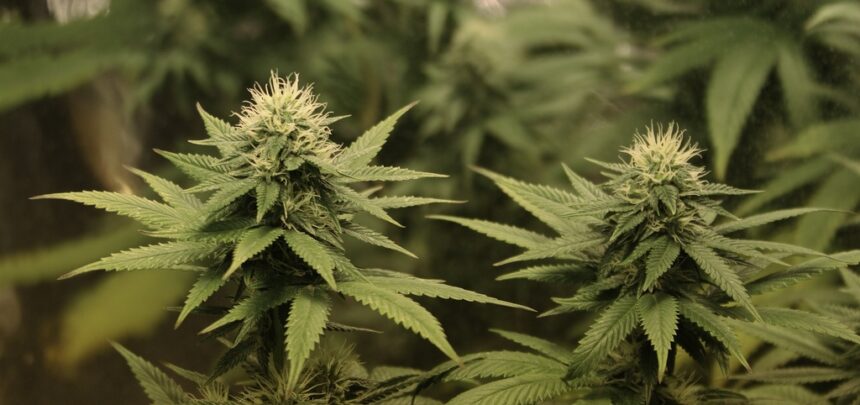In recent years, cannabis consumption has gone from combustible offense to a big business. Let’s take a look at the state of the medical marijuana industry in 2016. It’s 4/20 again, which means throngs of people gathering in public places to blow hazy, psychedelic smoke rings from one of the most divisive plants on the planet: cannabis. Aside from the some 1.2 million registered medical marijuana patients — and residents of Alaska, Colorado, Oregon, Washington, and the District of Columbia (where cannabis is fully legal), according to ProCon.org — hemp enthusiasts will be celebrating at their own legal peril. (Note: if you’re wondering, “Why 4/20?,” HuffPo has a good explainer). Marijuana is still classified by the DEA as a Schedule 1 substance (along with heroin and LSD), which means that technically (on the federal level), it has no accepted medicinal use. That’s interesting, because 24 states have passed laws legalizing medicinal marijuana treatments in some form. The Department of Justice has acknowledged this legal hall of mirrors, saying that they’ll leave states to enforce their own regulations, unless federal prosecutors decide to pursue action — at any moment and for any reason, essentially. The industry’s $6.7 billion dollar valuation, according to Forbes, however, suggests they’ll probably be keeping their distance, at least for now.
Medicinal Marijuana Goes Way Back
Marijuana, indigenous to Central Asia, may have been one of the earliest cultivated crops, some 14,000 years ago, as Live Science reports. But as early as 2737 B.C., Chinese Emperor Shen Neng officially endorsed marijuana tea as a treatment for ailments like rheumatism, gout, and malaria, according to Medical Daily. It’s been a staple in nearby India for nearly as long, and the potent drink bhang still serves social, religious, and medicinal purposes to this day (despite cannabis being outlawed in India, there are are provisions allowing for bhang production and consumption), as the Wall Street Journal reports. The Spanish introduced cannabis to the Americas in the 1500s for hemp cultivation — hemp is a fibrous, non-psychoactive neighbor to marijuana — which was so popular that by 1619, English residents of the second North American colony, Jamestown, were required by law to cultivate it (and even traded it as legal tender), according to PBS. By the 20th century, marijuana use was fairly ubiquitous in the U.S., but due to widespread, highly racialized fears about the drug’s effects, was criminalized nationally in 1937. The rest is well-documented history.
Present Day
There’s still debate within the scientific community as to marijuana’s precise medical benefits. Due to the plant’s criminalization (and related bureaucracy), it’s been difficult to perform sufficient clinical research needed to establish definitive conclusions. However, strong trends are starting to coalesce, coinciding with a shift in the national mood towards its use. Studies suggest that marijuana — specifically, its component compounds like THC (psychoactive) and CBD (anticonvulsant, antipsychotic) — can effectively reduce the symptoms of a number of ailments, including chronic and acute pain, anxiety, spasticity, and nausea and vomiting in chemotherapy patients, according to JAMA and Newsweek. It has also shown promise as a treatment for conditions like schizophrenia, epilepsy, and even improves the healing process for broken bones. While a majority of research has focused on the adverse effects of cannabinoids, these have been proven to be non-serious, especially in the short-term, according to CMAJ. What’s more, marijuana ingestion has never been documented as fatal. So far, patients and the medical community have been strongly supportive of its use. In a 2012 survey of California medical marijuana patients, 92% alleged that it helped them to alleviate symptoms or treat a serious condition, according to the Washington Post. As of 2013, 76% of physicians supported the use of medical marijuana, as the New England Journal of Medicine reports.
Business is Blooming
Debate notwithstanding, the economics of marijuana have taken on a power of their own, and perhaps unstoppably so, according to the Motley Fool. By 2020, the industry, including recreational sales, is projected reach between $22-44 billion annually, outpacing even the National Football League, according to the Marijuana Business Journal. Over the same period, additional spillover benefits, such as jobs created, are estimated to add $13-33 billion to the U.S. economy. Because of the discrepancy between federal and state legislation, the number of legal medical marijuana dispensaries remains a subject of debate, but likely falls somewhere between 1,000-10,000. In Colorado alone, there are about 600, which outnumbers Starbucks and McDonald’s locations combined. Reports suggest a similar number of dispensaries in California, according to BallotPedia. Naturally, these facts have fueled a growing wave of popular support: Third Way explains how 78% of Americans favor medical marijuana legalization (58% back recreational use according to Gallup polls). However, it’s still unlikely that the industry will gain federal legal status in the immediate future; the vetting of medical treatments takes time, and justly so. Meanwhile, there are other legitimate questions to answer, such as whether youth patient populations should be prescribed medical cannabis, and whether legalization would, in fact, increase abuse of the substance. To note, popular drug prevention program D.A.R.E. has removed marijuana from its list of gateway drugs, according to the Sun Times Network. But considering how rapidly the medical marijuana industry has grown in recent years, don’t be surprised if it continues to proliferate at a breakneck pace. What’s clear is that cannabis has made a move from the countercultural to the mainstream medical — and obnoxious 4/20 celebrations notwithstanding, any medical progress is good progress. 
![]()






